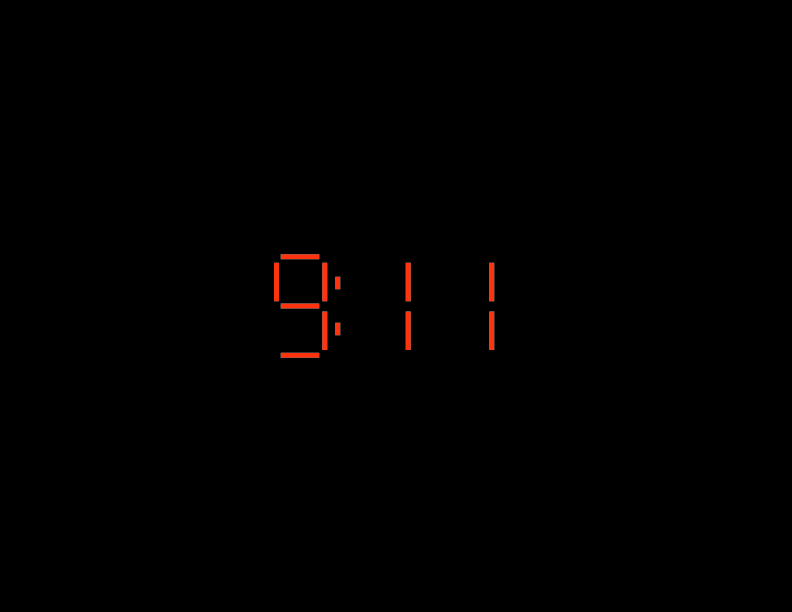I discovered very intimate evidence that our brains are always aware of the time– and not just by casts of a net or any such wide margins, but down to the very minute. And it is only exhaustively heightened by images. In this peculiar case it was an instance of realizing something that had been present all along as opposed to an uncovering. The former turns out to be more haunting, and, of course, more interesting to analyze in retrospect.
One Saturday I happened in on my parents re-watching an episode of Columbo, Double Exposure, from 1973. In this one, the murderer manipulates his victim with clever use of subliminal cuts placed in a short film– single frames which the eye detects but does not consciously process, in other words, that one does not “see” (thus confirming our long-held suspicion of advertisements). The whole premise is rather nebulous, but we entertain the horror of it just to allow Columbo one more thing.
I had sat down, engrossed. But by pure coincidence (or was it) I realized it was after 9pm and I had to go. Exactly 11 minutes after 9. (My father loves being dramatic, and pretends to freak out every time he sees the clock read that for the past decade.) With thoughts of subliminal cuts still fresh on my mind, I thought there had to be something related between them and the seemingly increased amount of times the clock says 9:11 whenever I check it. It’s strange, after all, that a number that 15 years ago was fairly arbitrary (“nine-eleven,” as opposed to “nine-one-one”), should in any way become less objectively arbitrary and actually increase in gravitational pull, as it were, towards it, after some incident. The explanation for that would be fairly clear: it’s not to do with the number itself, but the amount of times it’s been printed and spoken (and thus– read, seen, and heard) since then. I wish it were easier to dig up, but surely there must be some statistics on the number of times “9/11” has been mentioned or printed by the media since that day.

Since then, those three numbers and four syllables have become so charged that merely uttering them opens up a whole series of unconscious responses in our brains. And this is where I make a bold assumption: I think our brains try and force us to bring those responses. Why? Perhaps our minds will do anything to feel more at one with the world around us (that is– having stimuli to react to). Or maybe it carries a unifying spirit, a combination of anger and camaraderie that binds some of us together and paints others as enemies. A quasi-religious, wholly human trait. To make sense of the world, we need friends and enemies. We create good and bad, right and wrong, to guide us. So our brains use this simple tactic of somehow making us that bit more nervous, reminding us to check the time, in order to identify patterns and paint a picture, which speaks thousands of words to us, organizing and giving purpose to these isolated responses relative to a collective whole.
Surely the media has thought this through already….
It’s not hard for the brain to know what time it is. Forget the internal mechanism, I’m talking about down-to-the-minute accuracy. Think of all the places and times that two numbers with a colon in between occurs in your field of vision. Between waking up and sitting down at work, I see my bedside clock, my laptop screen, VCR, clock in the kitchen, New York 1, NPR, cell phone (about once every 5 minutes), microwave, church bell tower, train ticker, useful little news screen in my elevator, even my work telephone. Each display the time, and these are all within one hour. Of course my brain is going to know when 9:11 is. I also happens to fall right on one of the most stressful times of the day: the beginning. I realized, horrified, on the train platform, that even with the train display and the courteous robot PA voice, people still lean out to check for themselves if the next train REALLY IS far away and still out of sight. I couldn’t bear the stress of checking the time the second I emerge from the train station. What difference will it make? I’m going to walk the same distance at roughly the same speed anyway. I had to return to my Scandinavian roots: where some clocks are made that look like this:

The idea being that you don’t ever need to know EXACTLY what time it is, to the second. In fact, maybe even the minute hand is excessive. One need just to look at the clock and realize, “Oh, it’s time to eat.” or “Oh, it should be getting dark soon.” And here I had always wondered what those silly log clocks were for, with that one short hand that never seemed to move.
“Can you miss a plane by 5 seconds?”
The second hand is something of an invention, something we need just to indicate that time is passing.
This was all too much for me.
So I stopped wearing a watch.